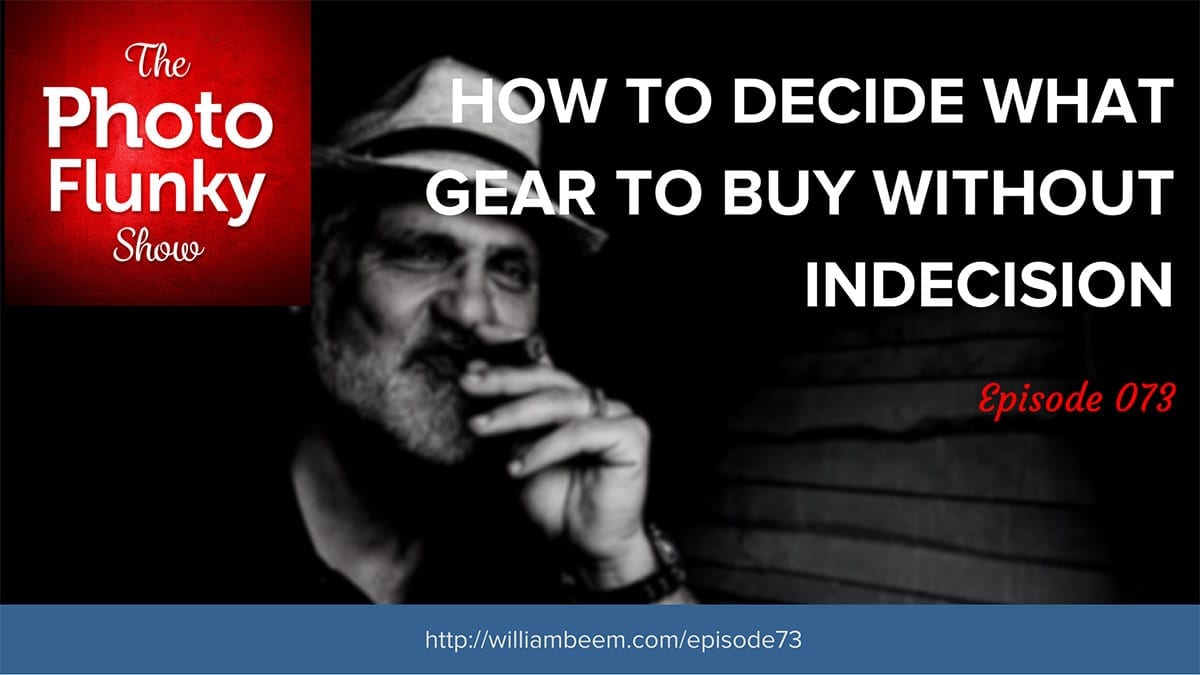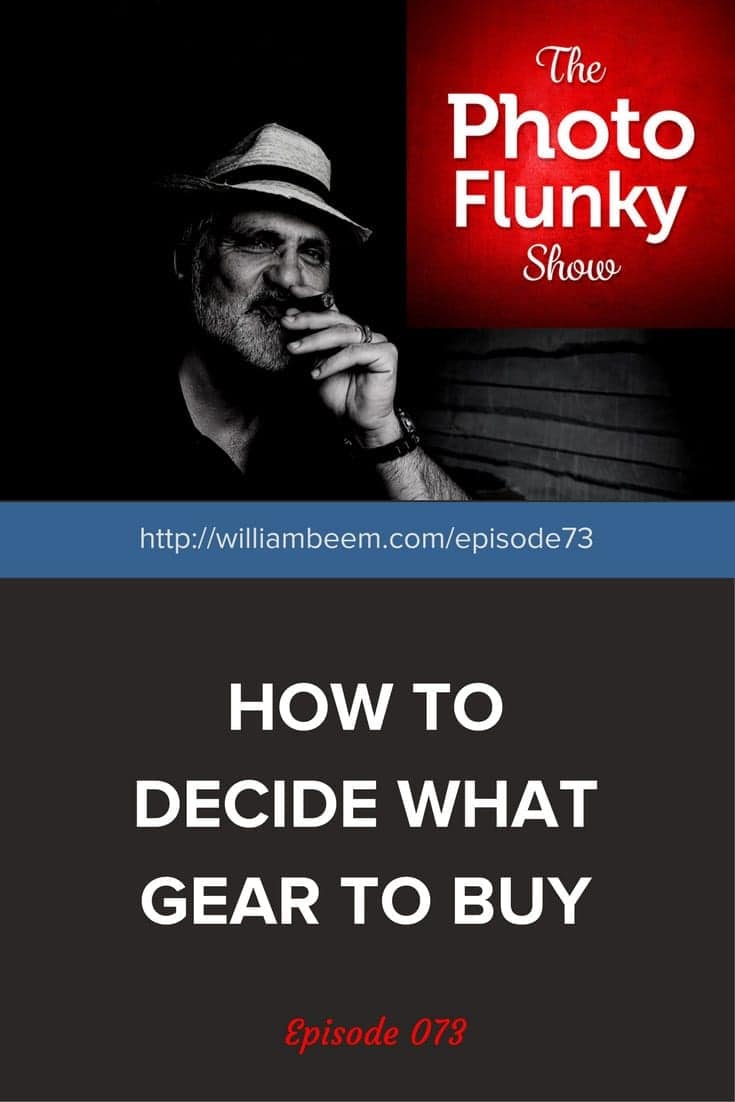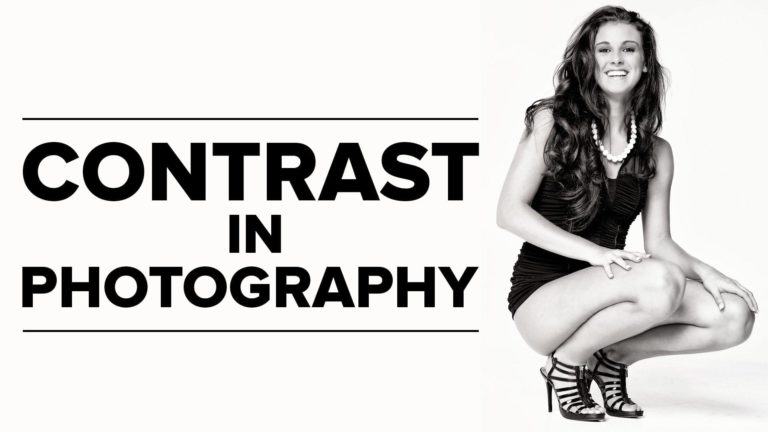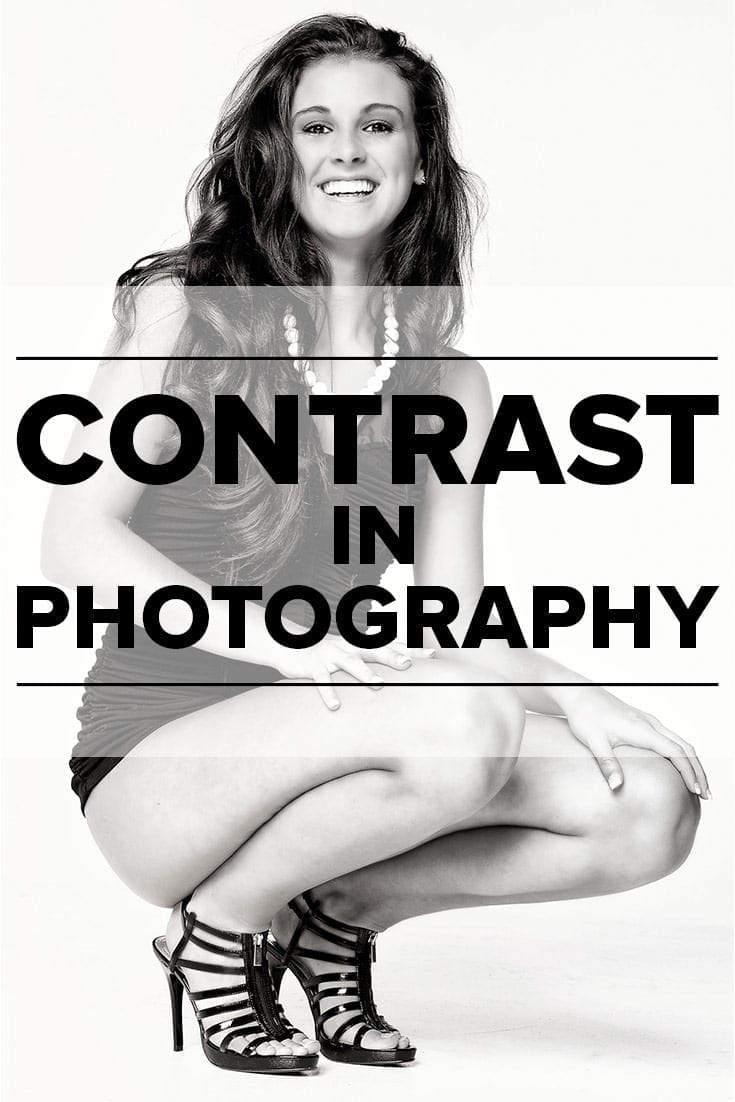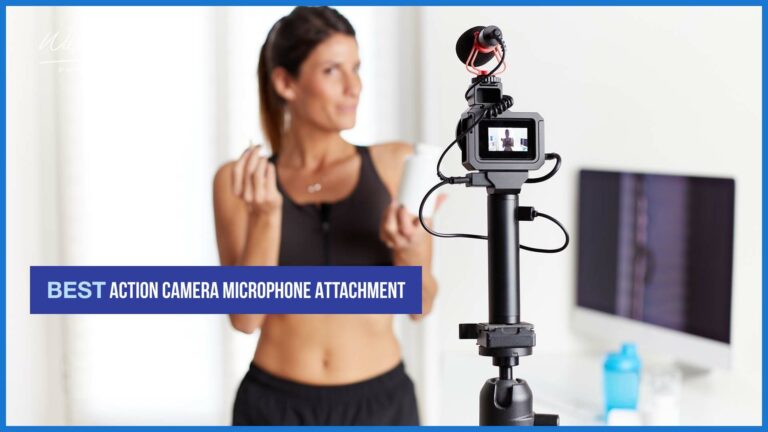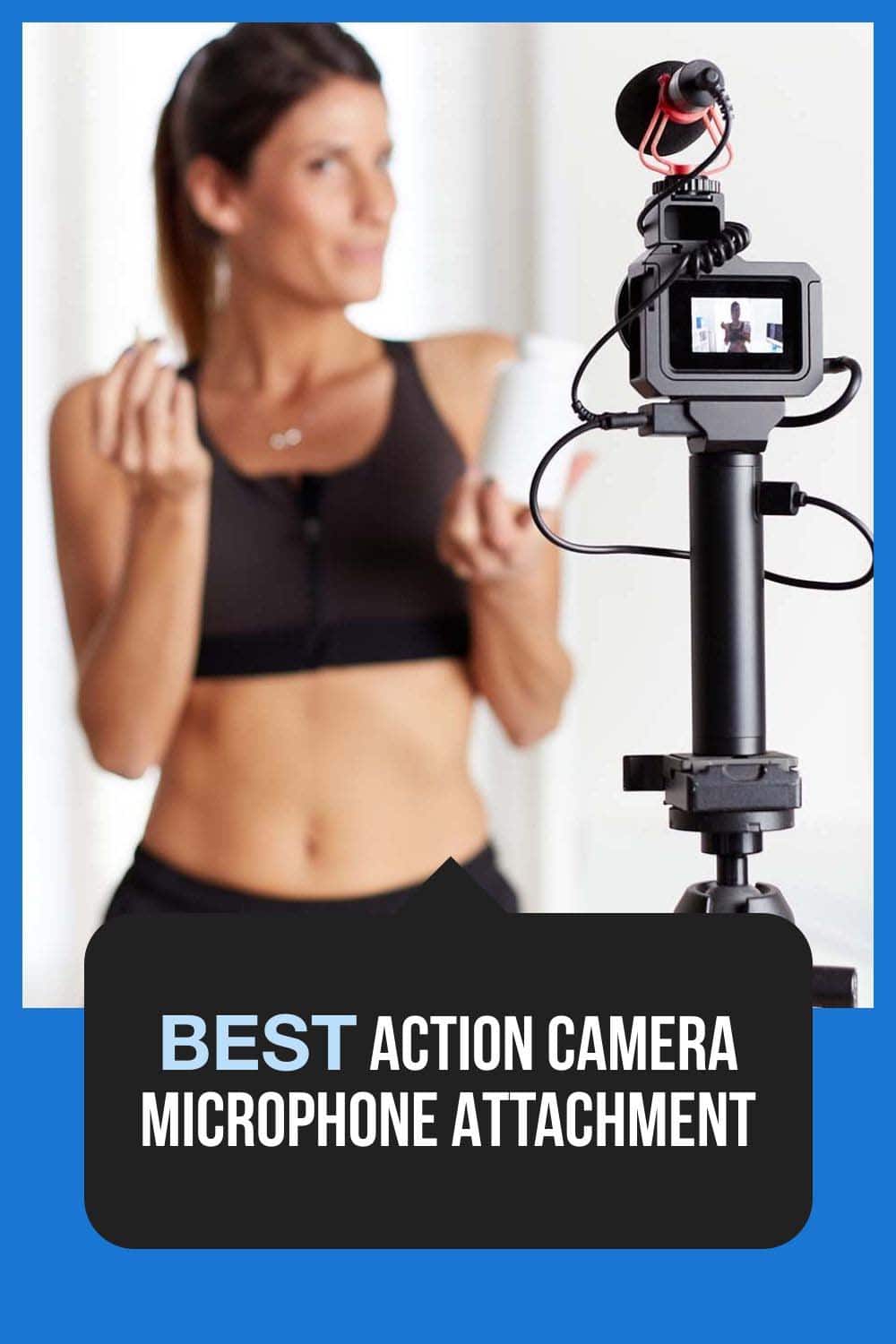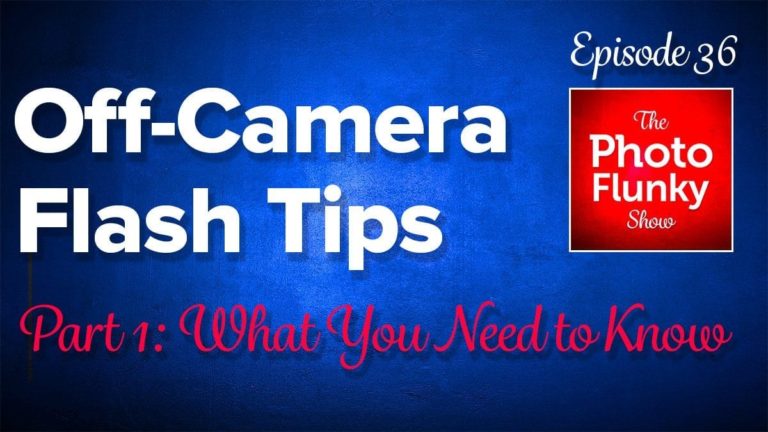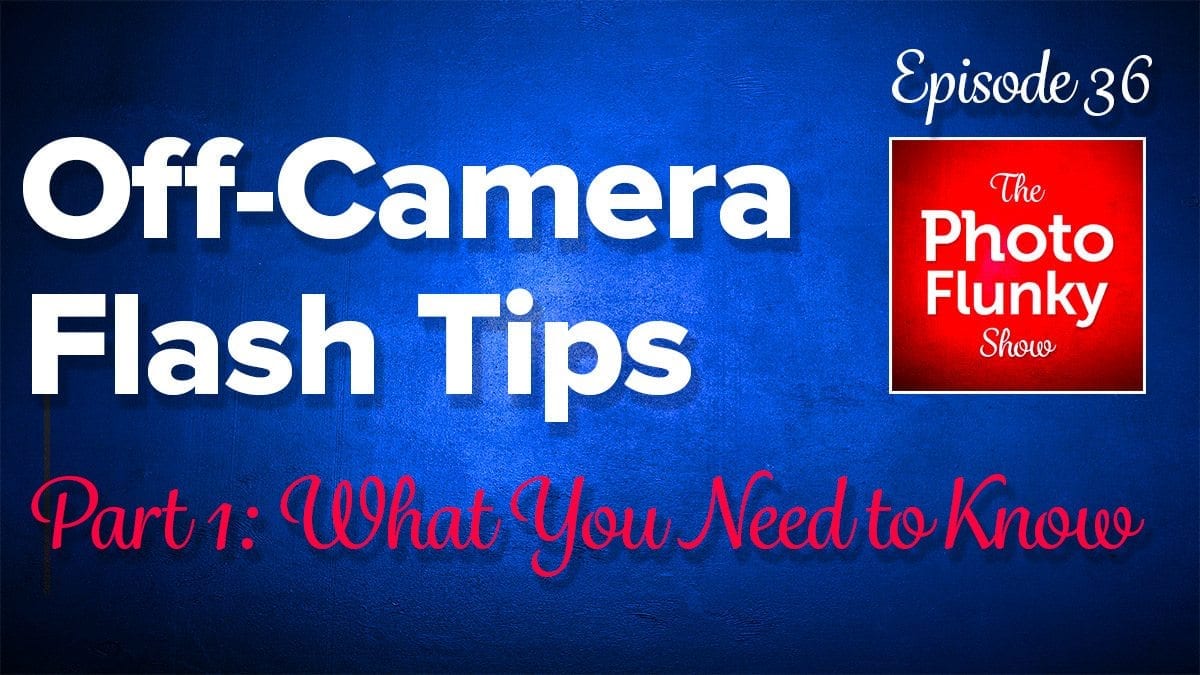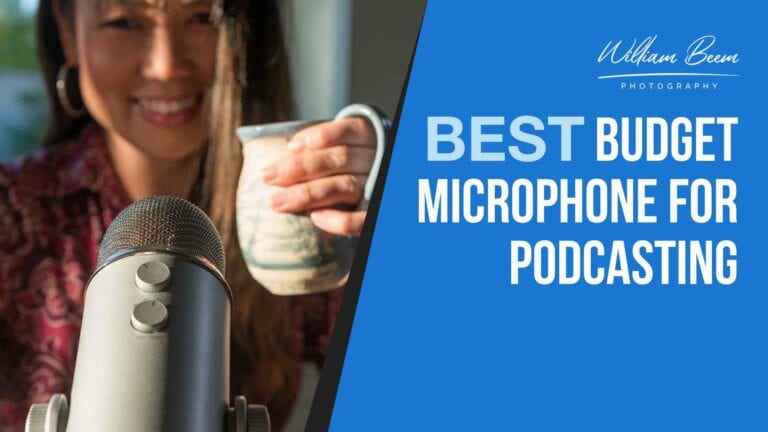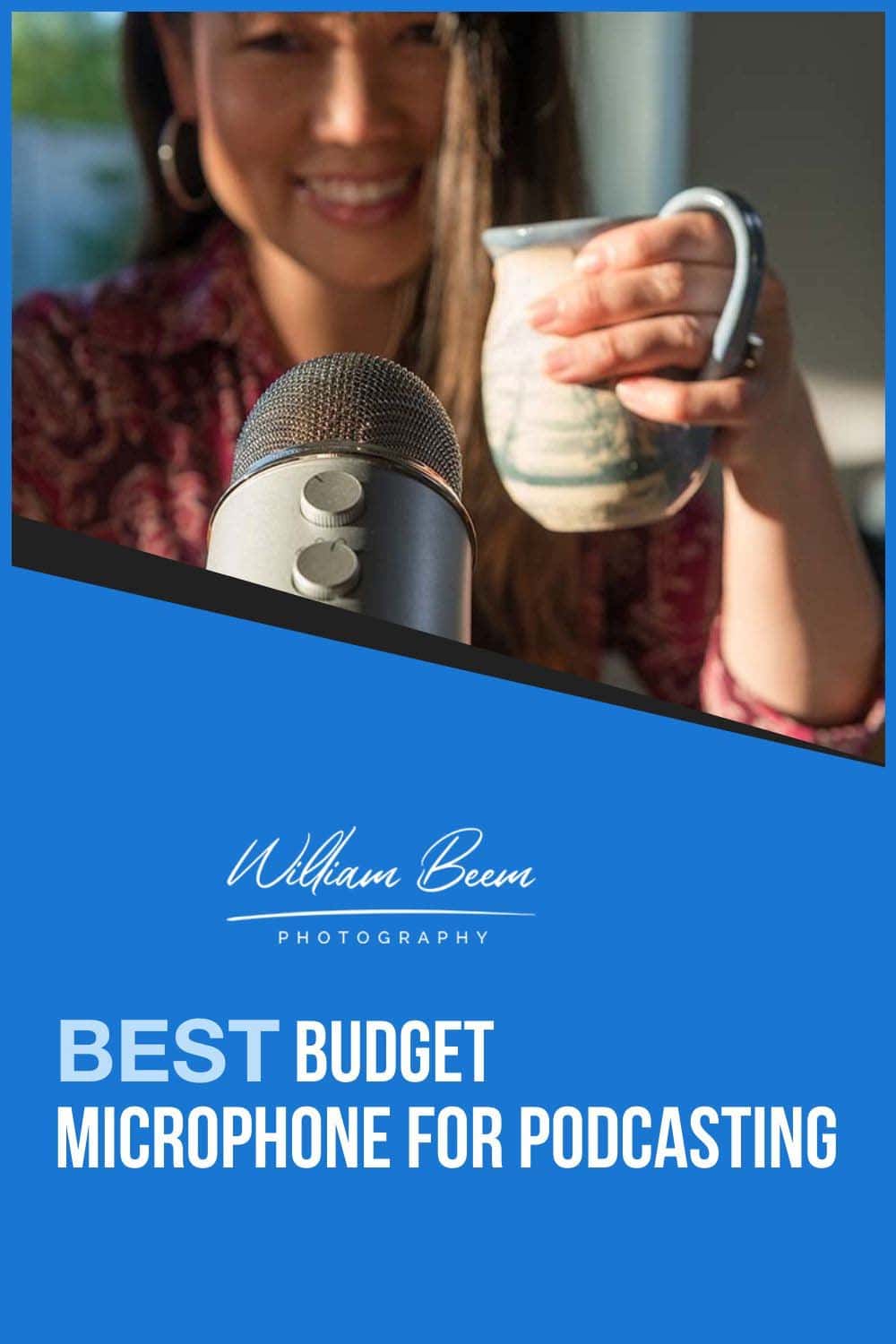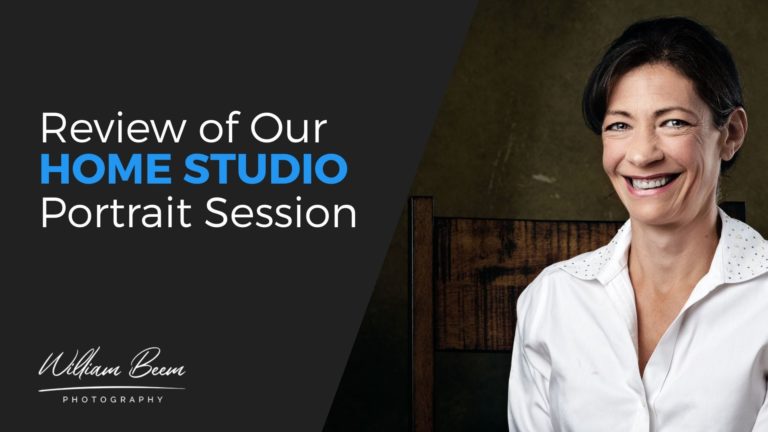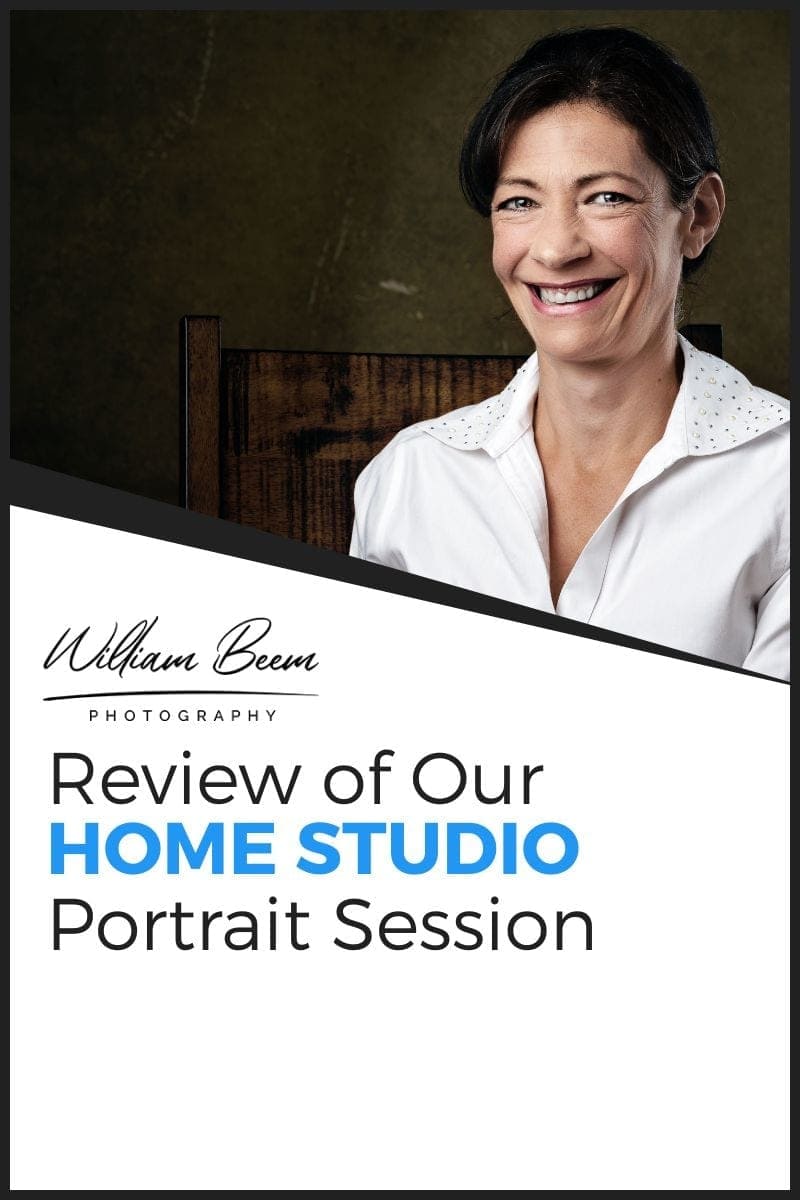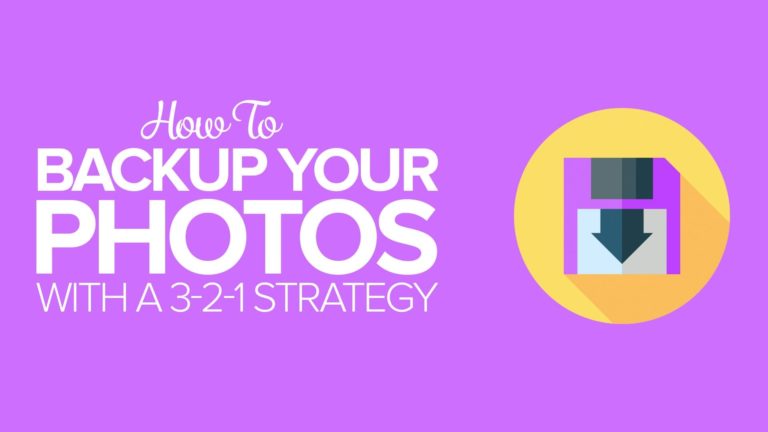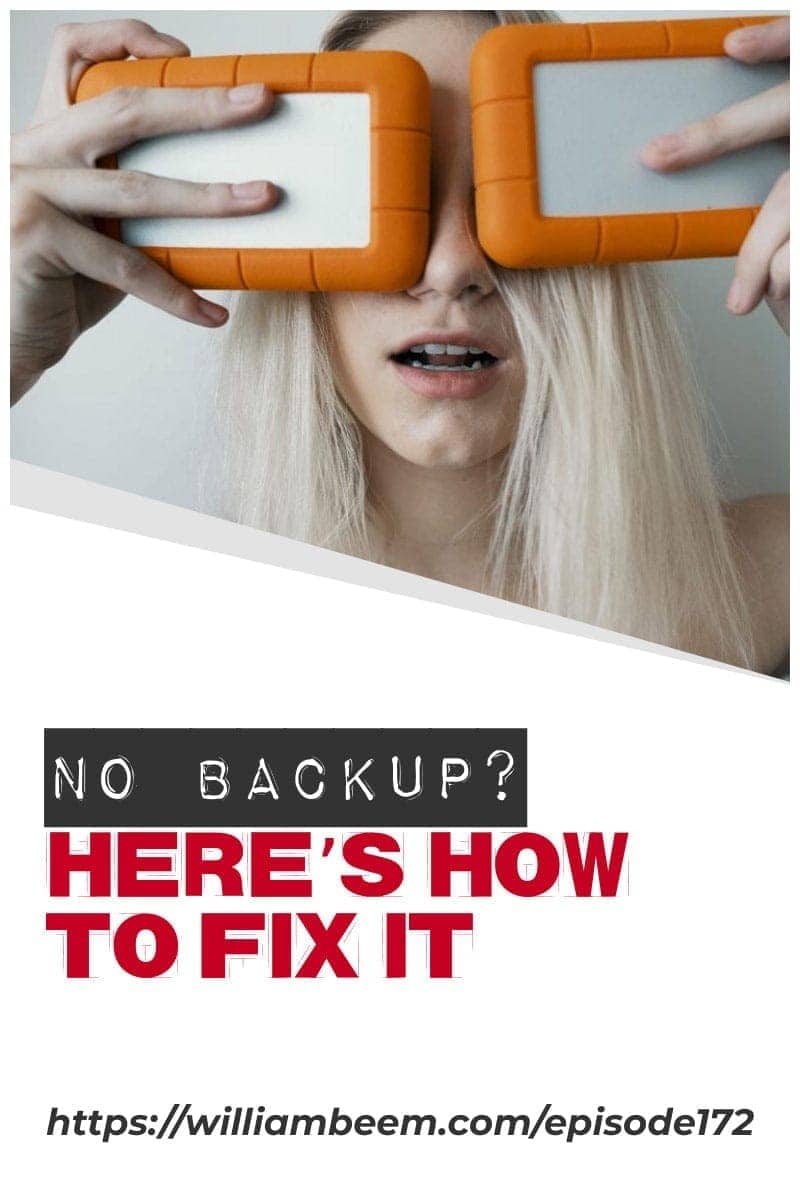Affiliate Disclosure: We earn a commission if you purchase through one of our links at no additional cost to you.
How to Decide What Gear to Buy: What You Need or What You Want
When it’s time to buy a new camera or some related accessory, sometimes you get information overload. It’s tough to know how to decide what gear to buy. With so many options on the market, it’s easy to overthink your decision. Trust me, I do.
Another extreme is buying something because it’s the flagship product. Maybe it’s because some of your mentors use a particular piece of gear. There is a lot of groupthink in purchase decisions, particularly in photography.
We want what others have, because we think it will help us get the photos that others get.
Outside of extreme cases of action or event photography, it’s surprising just how much all of that top end gear doesn’t really matter. The truth is that we can take really nice photos with something as simple as a camera phone. In fact, we’ve already seen a magazine cover now that was shot with an iPhone.
So how do you decide what gear to buy?
Budget vs. Best
There’s an old saying.
“The most expensive thing you buy is the thing you buy more than once.”
On the surface, that seems like good advice. There’s just one problem with it. If you can’t afford to buy the gear that will last you a long time, then you aren’t getting any benefit now. You have to decide what’s more important. Having the best at some point in the future, or having something now that will do the job until you can afford to move up.
Mind you, flagship product isn’t always what’s best for you.
If you need something light, portable or small, then you don’t want to get the flagship camera from Canon or Nikon. They’re great cameras, but they are not light or small. Sometimes lugging a beast around isn’t “best” for you.
Get the best you can afford for your purpose, and get it now. By the time tomorrow comes around, your “best” piece of equipment may not longer be the best for you. In the meantime, you can get to work doing what you love with the gear you can afford.
Subscribe to The Photo Flunky Show
Save yourself some time and get The Photo Flunky Show delivered to you for free each week. We’d love to have you as a subscriber!
iTunes – https://williambeem.com/itunes
Stitcher – https://williambeem.com/stitcher
Google Play – https://williambeem.com/googleplay
Blubrry – https://williambeem.com/blubrry
Transcript
William: Welcome toThank you very much for joining us on the Photo Flunky Show, episode seventy-three.
Today we are going to be talking about purchase decisions. Basically, are you going to be buying the gear that’s best for what you need, that best that’s available or what’s affordable to you right now so you can go ahead and get started.
Hi everybody, my name is William Beem.
Lee: Hi, my name is Lee Beem.
William: We just want to let you know that show notes for this show are going
to be available at williambeem.com/episode73 and you can find links to subscribe on that page. Also you can go to photoflunky.com and many others if you want to listen to some of the back episodes and of course links are going to be available there.
Also, before we get started I want to let you know that there is a special from MacPhun for Luminar, their new raw processing and effects processing engine is available until May 23rd, 2017. If you want to get in on this you can use my coupon code. It’s an affiliate code. It’s the same as my last name: BEEM.
And here’s what you get. It will save you $10 to $20 off of Luminar, depending on whether you’re already a MacPhun user or not. If you are it will save you $20 off the list price, if not it will save you $10.
In addition to that you get one month of Kelby One Training included and a preset bundle for Luminar from Scott Kelby. If you are interested in that you can go williambeem.com/luminar and get started. When you check out make sure you use my coupon code BEEM and hopefully that will give you some wonderful new software and also save you a little bit of money.
Alright, so let’s get started. The reason I’m coming up with this is because I mentioned on a previous episode where we were talking about getting started with video how I spend a lot of time looking at different cameras and what I needed and I spent a long time trying to decide before I finally made a purchase decision and ultimately we decided that the best thing to get really wasn’t the most expensive camera, but it was best for what I needed. I needed two cameras. One of them had to be a GoPro Hero 5 Black and the other was a Canon G7X Mark II.
Obviously we’ve already got our DSLR’s. They can do video but mounting one of those on your dashboard for driving videos ...
Lee: It’s not really practical, is it?
William: But I see this argument with people at some point. There is a theory out there, not just for cameras but anything that you buy, that you buy the best so you only have to buy it once.
Lee: Yes.
William: It sounds like good advice on the surface, but if you can’t afford the best of what you need, does that mean that you don’t buy anything at all?
Lee: I’ve always said the most expensive thing you buy is the thing you buy twice, but that is the black and white version. Real life always has gray areas.
It’s just one of those things.
William: And that’s what we’ve experienced. There is an article about tripods from Tom Hogan. It’s very popular and it’s well thought out and his advice was don’t buy cheap tripods. Buy the best tripod and that way it will last you a lifetime.
I followed that advice. I went out and got my tripod from Really Right Stuff. It is a solid carbon fiber tripod. I spent over $1000 on the tripod and the ball head. That’s a lot of money. I had it at the time to spend on it. Other people may not be in a position where they can just drop that much money on a tripod.
Lee: Yes. That was recommended to me when I was looking for tripods.
William: Probably by me.
Lee: It was by you, actually! The Really Right Stuff. And this was when William and I were friends; we weren’t actually together at the time and we are going back many years now. But I said that was out of my price range and your response was ...
William: It was cheeky.
Lee: You get what you pay for!
Now I do believe that. That is not wrong. You do get what you pay for. Here is the difference. William has two full frame cameras. He has some really expensive lenses which are incredibly heavy. I’ve got a crop sensor camera and my lenses are not as heavy, even if I put one of his lenses onto my camera, it doesn’t come anywhere near the weight and have the same support and stability requirements that William’s cameras do.
So I guess I looked at that and I spent about $100 on my tripod because I eventually realized is what I need to look for is something that is going to support my camera, be solid and sturdy and preferably not weigh a ton for me to carry around.
But I only wanted to buy one tripod. So I could have said I’ll buy the best I can and only get one. Or I could have said I’ll get the best I can and buy two for different purposes.
You really just need to – I always say – define your purpose.
William: I did end up going and buying another tripod. It was also from Really Right Stuff. The one I bought first was a TVC33. It’s a really wonderful tripod and it doesn’t have a center column because, not to get too much off the topic, but the reason I didn’t want a center column is you lose stability as you raise that center column up.
Suddenly instead of the base of the tripod being where your most support is, as you raise that up, there is a chance for wobble in the center column. I wanted the big one and it has been stable, I’ve had it for years. It’s wonderful.
When I do portrait photography shoots I have got tether tools, a table and a cross arm, one holds my camera with the ball head and the other holds the table with my laptop. It’s a wonderful platform. It’s not cheap.
Lee: It’s not. And also because I have a center column (because I’m cheap) I am able to put my camera bag underneath the center column because it slightly raises. That may or may not touch, depending on what is in the bag and how I position it. For me the biggest bonus is when I am in a crowd, people are not able to put their kids under my tripod. There is not space.
William: Yeah, that didn’t work for me with the big tripod. I was out at Walt Disney World one time and someone said, “I’m going to put my kids under your tripod.”
Lee: I had a similar experience and it was your story that made me think I want the center post.
William: Anyways I went out and bought a smaller tripod from Really Right Stuff and it does have a center post. The reason I bought it wasn’t because of that particular issue. It was because I thought sometimes you don’t want to be walking around with a big tripod. It’s not heavy; it’s very lightweight. But it is larger. Sometimes the legs splay out and if you’re in a crowded area that’s not feasible.
With photography at Walt Disney World they say no large tripods. They don’t define what a large tripod is.
Lee: No, it has to fit into a standard backpack, but they don’t define what a standard backpack is.
William: But you know, if I go out there with a smaller tripod I’ve not had any problems with them at all. So I’ve got the smaller tripod. Even getting on a plane you can have your camera bag and maybe you stuff this on the shoulder strap. I’ve had no problems carrying this as carry-on.
There are times when smaller is better, depending on your circumstances. I bought quality stuff. I am not going to need to buy them again for the given sizes that they are, but I’ve got some other tripods that are older and some of the aluminum things I got are very heavy. They are less expensive, but man, they are a pain to take around. But they did the job.
They provided me support at the time. At least, until one of them got bent!
Kind of getting back to the question is do you buy the best or do you buy what you can afford?
In the past I bought what I could afford and I had to replace it a few times and it cost extra expenses, but the best part of it is I got started.
Lee: You see, to me that is important. How much sacrifice are you going to make waiting to be able to invest in the best? I have done the same. This goes for lenses, it goes for tripods or really camera bodies maybe for some of you – or anything. It’s not just photography. It’s my approach. I get that. I first look for something that meets all my needs and I try not to have to pay for bells and whistles that don’t mean anything to me.
William: Before we got married we both approached this from a very different circumstance.
I had a really nice paying IT job, I was single and I had extra cash on hand. So I bought Nikon full frame, I bought the 2.8 zoom lenses, all three of them; I bought the F1.4 prime lenses that I wanted. These are not cheap lenses. We are talking a couple of thousand dollars a lens plus the body and then the other gear that went with it. And I had money to go travel and do stuff like that.
You on the other hand were under different circumstances plus you were also raising Tové. We are both into photography. You take lovely photos. Clearly the gear wasn’t what was getting in the way of your photos.
Lee: I think you can let the gear get in the way of your photos. It’s not the gear, but it’s your mindset. If your mindset allows your gear to limit you by comparing yourself to someone else, it is going to show in the results of what you are doing.
If you lift those limitations and say I’ve got a camera, he’s got a camera and stop thinking about doing direct comparisons and go out and take your shot your way. I don’t think it is a limitation. You are going to get into something very specific or possibly very high end – either/or and maybe a bit of both – before distinct differences actually visually show to the point that they are noticeable. Don’t place limitations on yourself.
William: Here is what was in my mindset and I have changed my position on this. I used to say buy the best. Now I’m going to say buy the best you can afford but don’t let it limit you. Sometimes you are going to have limitations with less expensive gear, whether it be your camera, your sensor size or any number of things. Any camera can take a wonderful photo in good light.
Where you start running into problems is if you are in low light situations and you think, oh man, I’ve got too much grain or noise on this. Or I just can’t get the bokeh that I want on this. You know what? Change your style to match your gear.
Lee: I’ll give you a good example to back up what you’re saying. It was in the last few days, somewhere middle of this week just past, I had posted something on social media and somebody had started asking questions and started messaging me about the camera that I use and my Photoshop skills. And it was kind of comical but I replied honestly. The photo was taken with an iPhone and it was processed in a free photo editor app on my iPhone.
William: Yeah, and the people who are looking at the photo don’t know what gear you’ve got. They don’t care what gear you’ve got. So long as the photo has a quality that impresses somebody, it doesn’t matter what you use.
So we are realizing – not we; Lee has already known this. I’m the one who is slow – I am realizing that a lot of things I bought in the past were because I was watching people who are using this gear and in some instances it does matter. If you are shooting sports or concerts or events and things like that, you need to have the wide open aperture, the lenses are going to cost more and it matters.
But you know as I’ve gone through I’ve tried all these different types of photography and I’ve settled on something where it doesn’t matter. I could be sitting there and if I’ve got good light I can pick up this point and shoot camera that I just bought, the Canon G7X Mark II. I can take a photo with that which would probably not be differentiated from what I’m taking with my Nikon D800 or D810.
Lee: I agree. There are very special circumstances where a certain item of your gear or multiple items of your gear are going to be a make or break. Those are real. I am not dismissing those and saying they don’t exist. And I’m not going to call anybody average because I think anyone who is a photographer and is improving is beyond average, regardless of level. As regular people taking photos, who are just passionate about it, we are probably not going to regularly or frequently touch on any of those requirements at that level.
William: I tell you what I’m doing these days is mostly portrait shots in a home studio environment. So long as I can trigger the flash I’m pretty much shooting F8 or F11 or something like that and that’s the sweet spot of any lens. You don’t need that wide open aperture.
If you are trying to do something ultra creative or you’re trying to do something where maybe you’ve got to put on neutral density filters and then shoot wide open for the background ... I’m not doing that. I’m shooting on a gray background. And doing some compositing later on.
I am fine with the camera that I’ve got, but you know what? I could have bought something far less expensive and come up with the same level of work of what I’m going to produce now.
Lee: Well just thinking of an example. I think when you go into photography and you start searching for information, there is so much out there. It is incredibly overwhelming and it can make you feel like you are just drowning in information and you are never going to get there.
A few years ago I would have thought, what lens do I need to take a still life photo? Yesterday I picked up my DSLR and thought I need to take a still life photo for something I wanted to put on social media for marketing things. I had set my scene and looked and thought what lens was on the camera. I looked at it and thought 50 mm prime? Oh, this will do. It probably wasn’t necessarily the best lens to use, but in the end result it made no difference. There was a little bit of light retouching done in Lightroom and it was perfect. I am quite confident that it was a success, going by the results it was a success.
You can over think things. You can over think what you need.
William: Kind of going along that trend, the question is: Do you buy what you need or do you buy what you want? And I bring that up because I’ve got a number of friends who, because they have the money and resources, when the top level camera (for me Nikon, Canon, Sony ...) comes out, they buy that because in their minds that is the flagship camera. That’s the best camera. So if you go out and buy a Nikon D5 – are they up to D6, I can’t remember – or buy the new Sony that comes out, some people will want that camera because they think it will do everything. I’ve never bought that because it was never the best for me.
Those cameras had features that I just simply didn’t need and I wasn’t going to spend a few thousand dollars extra – more than double, probably – the price of the camera that I ended up buying because that wasn’t the best for me. And I didn’t necessarily want it because it was the flagship model.
Lee: But the flip side is there is nothing wrong with that. I am not going to pretend that if there were no budget, I wouldn’t do the same thing. I have never been in a position where budget was absolutely zero on the scale of it being an issue. So I am not going to say I wouldn’t. Get the best you can afford. If the best you can afford is the newest thing that’s out there and it makes you happy, roll with it. Go for it, grab it, enjoy it.
William: I’m going to say that I won’t because throwing $6,000 at a camera body when I’m not going to use any of the features that are above and beyond the one I’ve got, I don’t need to. It’s kind of like what I just said with the video cameras. We didn’t necessarily buy the fanciest cameras we could find. We bought common consumer level cameras. They do a great job for what they do.
Lee: That’s because Lee is such a practical person.
William: It’s not just that. It’s also because they are small and they are lightweight and the best for me was something non obtrusive and lightweight; not necessarily the biggest $6,000 camera body I could find.
Lee: But for some people those bigger $6,000 camera bodies are going to be the best tool for their job. I am going to risk it and just make a blatant statement to say they are in such a tiny fraction of the minority.
William: Yeah I think that’s true. Most people probably aren’t going to buy those and Nikon doesn’t make as many of those cameras for their top end flagship bodies simply because they know the market is not at high for that. Those are probably going to go to sports photographers and a number of professional photographers who need those resources. But I bet you some of those professional photographers or even some of the advanced enthusiasts who are buying them never really max them out.
Lee: No, absolutely. And top end camera might be a top end product. That doesn’t define you or limit you and say that you are not a top end photographer.
William: Well here’s the thing that I think you really buy them for. If you are doing action photography and you need a fast frame rate when you are shooting, the new Sony that came out is A9 something or other - it shoots I think 20 frames per second. That’s almost video quality. Twenty-four frames is for film. And I think the top end Nikon one was shooting at maybe fourteen frames per second, if that.
That’s what people want. They want to see when there’s a moment of action – I don’t know what moment is going to be it; so if I can get a burst of photos in that time, I’ll spend $6,000 on the camera. That may be the difference between getting a cover on Sports Illustrated or not.
Lee: Define your purpose.
William: Yeah, I’m not shooting for Sports Illustrated so that purpose is superfluous to me.
Lee: You’re wanting to end off, aren’t you? I want to do a big shout out to my wonderful husband because – this is totally photography related – but he took my crop sensor camera and stood outside in the front yard and took wonderful photos for me of my hideously gaudy socks for something I needed to post on social media.
So I just want to say thank you, because I know it must have been a very painful experience.
William: It really was painful. Alright we are going off on a tangent now. I didn’t know that this was coming.
Lee has her own site that she’s starting to develop and she’s into her running; particularly endurance running, and she’s got a site that she’s building up called carefreerunner.com.
That site is not really there as we are recording now, but the social media on Facebook, on Twitter and Instagram, she’s become quite popular. She’s got an ambassadorship for a number of products and she is doing her runs and developing a community and of course, in order to keep that going, social media is a part of it.
So she needed pictures of her socks! And I have got to tell you, I really hate knee high socks. These are compression socks that are for athletes, which she is. I get the purpose behind it, but my god these are hideous socks!
Lee: The thing is, they are very purposeful socks because I have got some kind of identity ingrained in these socks.
William: I understand the purpose behind this too. She went to a race and people find her based upon pictures of her socks.
Lee: I posted a picture on social media the night before and said, if you see me come and say hi. I think the caption said “You cannot miss me. “ And yes, people came running up to me afterwards and said they were just looking at the ground to see the socks. “I found you!”
William: You don’t always get to shoot what you love, but at least I got to shoot who I love. That’s just an aside. I wasn’t expecting that, but that’s kind of ... I don’t know where to go from here.
Lee: We are real people. Come on! Enjoy us.
William: We’re going to wrap it up from here now.
Thank you very much for joining us on this edition of the Photo Flunky Show.
As I said, show notes are going to be available at williambeem.com/episode73 You can find a transcript of the show and links to subscribe and honestly, we would really appreciate it if you would subscribe to the podcast. It will get delivered to you for free.
You’ll find the links there and also at photoflunky.com
We hope you enjoyed this show. If you have comments, please leave them on the show notes page and we will see you again next week.

